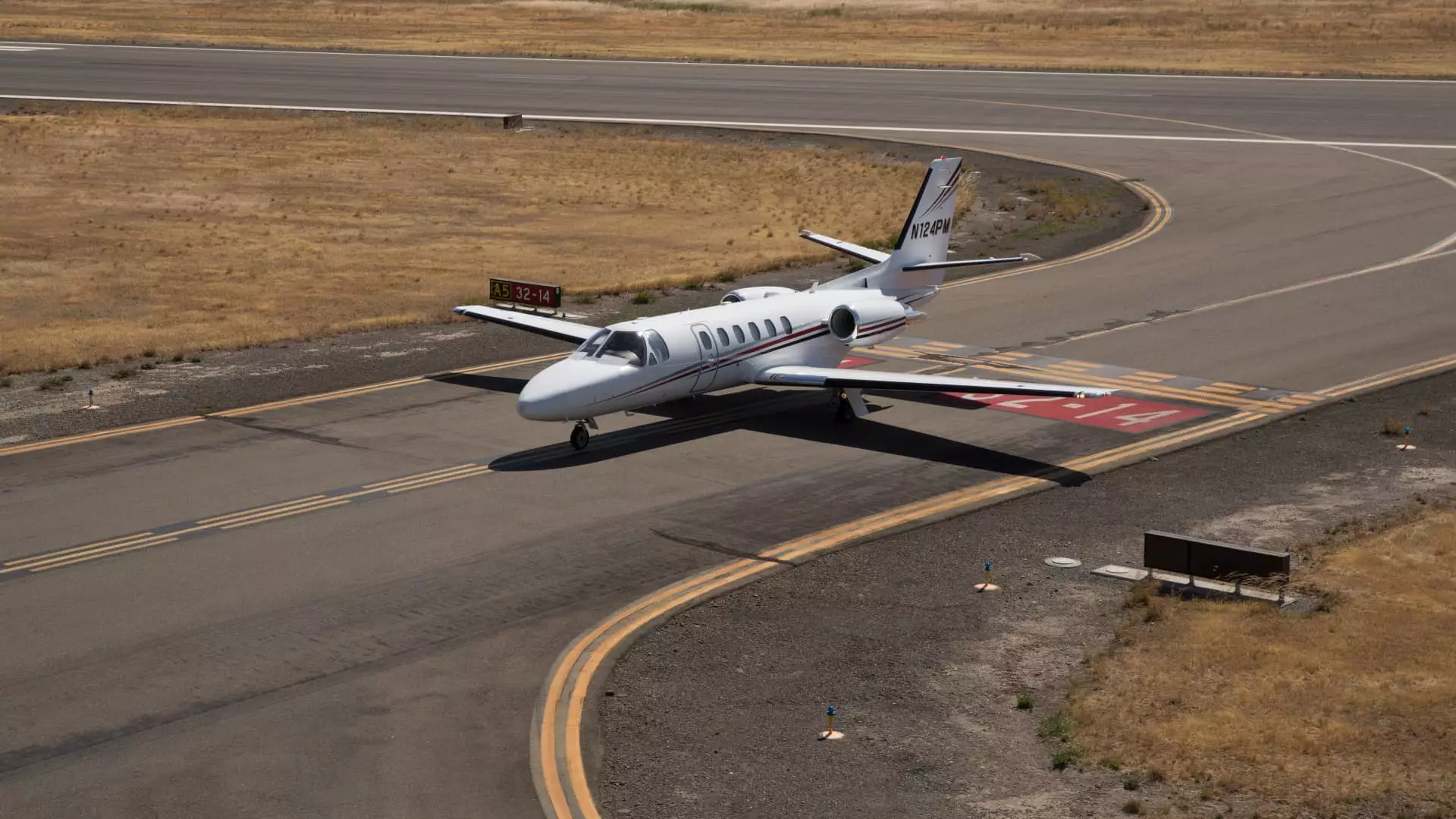The business aviation sector is experiencing turbulence as consumer confidence dips, resulting in a notable decrease in demand for commercial air travel. This trend was starkly underscored in Barclays’ latest survey, which revealed a 49% decline in customer interest for purchasing business jets since March. Conducted with 65 respondents from April 9 to 15, the survey captures the sentiment among business jet broker-dealers and financiers, painting a worrisome picture for the industry’s near future.
The Barclays Business Jet Indicator, which aggregates various metrics like the 12-month outlook and pricing models, noted an overall drop in performance, culminating in a composite score reduction from 52 to 40. This drop of 23% marks the most significant shift recorded by Barclays since the onset of the COVID-19 pandemic. The results suggest a sluggish market; a composite score in the low 40s is indicative of a backdrop where order fulfillment is lagging the demand.
Market Sentiment and Economic Constraints
Analysts, including Barclays’ own David Strauss, expected a decline in market sentiment, yet the extent of the downturn has caught many by surprise. Responses from survey participants indicate a prevailing sense of caution, particularly around geopolitical dynamics such as tariffs. Almost half of the respondents, 46%, acknowledged a marked decline in customer interest, while only 10% reported improvement in demand.
The implications are severe. Strikingly, when prompted about the impact of tariffs on new aircraft purchases, a staggering 93% of those surveyed predicted a negative outcome. This overwhelming consensus reveals deep-rooted anxieties within the sector regarding external economic factors. These tariffs not only affect market dynamics but also pose a threat to the operational stability of businesses adjacent to aviation.
Used Aircraft: A Gloomy Outlook
The picture is equally bleak for the used business jet market, where 67% of the survey respondents expressed a pessimistic outlook regarding demand. Many foresee a significant or minor negative impact resulting from broader economic uncertainties. This suggests that, even for second-hand aircraft, which typically serve as a more accessible entry point for many businesses, the consumer hesitance remains substantial.
Contrastingly, a minority of 27% of participants maintains a hopeful perspective, expecting some degree of demand growth for used jets in the future. However, this optimism seems puzzling when weighed against the broader context of economic uncertainty.
Potential Legislative Relief on the Horizon
Despite prevailing pessimism, there remains a flicker of hope for business aviation manufacturers. Legislative efforts underway in both the Senate and House of Representatives could provide much-needed support. Both legislative bodies have embraced a budget resolution aimed at extending components of the Tax Cuts and Jobs Act (TCJA), particularly the provision that allows businesses to deduct 100% of eligible equipment purchases immediately.
With Republican lawmakers keen on revamping this tax benefit, there exists a potential pathway to reinvigorate the sector. President Donald Trump’s recent calls for retroactive deductions add another layer to the unfolding drama, suggesting that there could be relief even for those wary of the economic landscape. By potentially reinstating a 100% deduction rate—phase-downs currently ongoing could allow for a resurgence in equipment purchases—it could ignite new interest in both new and used jets alike.
Future Directions in Aviation Purchasing
As the business aviation market contemplates its next steps, key players must weigh the challenges against possible scenarios for recovery. There are considerations that go beyond market surveys and scoring metrics; building consumer confidence will necessitate a proactive approach from manufacturers, financiers, and policymakers alike.
While current trends project a need for cautious investment in new aircraft, forthcoming legislative measures could catalyze a turn in the tide, stimulating demand and invigorating a beleaguered sector. For the aviation industry to regain its trajectory, stakeholders will need to dispel anxiety through transparency, attentiveness to market dynamics, and, importantly, adapt to economic realities that are in constant flux.

